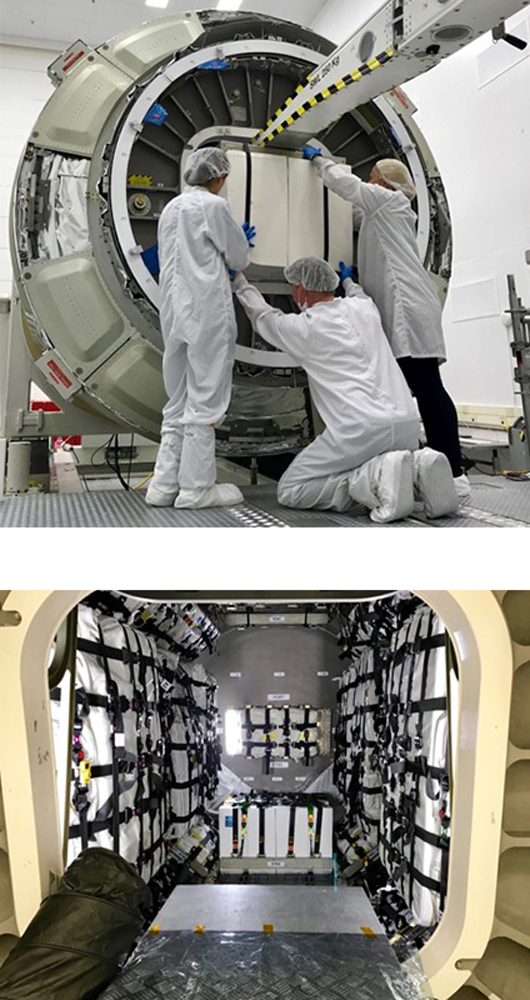NASA Is Launching a Box of Lasers to Make the Coldest Spot In the Universe
With an experiment launching to the International Space Station Monday (May 21), scientists will be able to create a temperature that's 10 billion times colder than the vacuum of space to focus in on atoms' weird quantum behavior.
The Cold Atom Laboratory (CAL) is a physics research facility the size of an ice chest, designed and built by NASA's Jet Propulsion Laboratory (JPL) in California, that will chill clouds of atoms with lasers and magnets aboard the space station to this ultracold temperature — close to absolute zero, or the lowest temperature possible.
Sunday's cargo launch to the space station, which is scheduled for 4:39 a.m. EDT (0839 GMT), will carry a number of experiments, including CAL. You can watch the launch live on Space.com, courtesy of NASA TV, beginning at 4 a.m. EDT (0800 GMT). [Visibility Guide: How to See the Antares Rocket Launch Monday]

Researchers will be able to conduct remote experiments in CAL, without any help from astronauts, for up to 6.5 hours every day, according to NASA's project page for CAL.

These ultracooled clouds of atoms are chilled to just about (but not quite) absolute zero. (Absolute zero is equivalent to minus 459.67 degrees Fahrenheit, or minus 273.15 degrees Celsius.) Known as Bose-Einstein condensates (BECs), the clouds contain atoms that are so cold, they move extremely slowly. Under Earth's gravity, the atoms in freely evolving BECs can't be slowed down enough for physicists to observe them for any longer than a fraction of a second, so scientists hardly get a chance to study their quantum characteristics, NASA officials said on the project page.
However, aboard the space station in a microgravity environment, things are much different. Without Earth's gravity getting in the way, these atoms can be slowed down more than they can anywhere else, using lasers and magnetic forces in an "ice-chest-like" compartment. The lasers slow down the atoms, cooling them to "like one-tenth of a billion of a degree above absolute zero," Robert Shotwell, CAL project manager and an engineer at JPL, said at a news conference on May 10.
In using CAL to study the atoms' quantum activity, physicists will be able to better understand how atoms behave at these extreme temperatures, a main thread in physics for over a century, according to a NASA overview.
Get the Space.com Newsletter
Breaking space news, the latest updates on rocket launches, skywatching events and more!

After cooling the atoms, CAL will automatically load them into weak magnetic traps, where researchers can study them. With the atoms held in place, the teams will be able to observe them in a variety of quantum states and interactions, NASA officials said in the overview. At this extreme temperature, researchers can observe the quantum characteristics and behaviors of BECs for up to 10 seconds, according to the project page. This might not sound like a lot of time, but it's significant when compared to the observation time possible on Earth.
"Studying these hypercold atoms could reshape our understanding of matter and the fundamental nature of gravity," Robert Thompson, a CAL project scientist at JPL, said in a statement. "The experiments we'll do with the Cold Atom Lab will give us insight into gravity and dark energy — some of the most pervasive forces in the universe."
The CAL mission began development in 2012 and will operate through 2020.
Visit Space.com Monday for complete coverage of Orbital ATK's OA-9 Cygnus launch for NASA.
Email Chelsea Gohd at cgohd@space.com or follow her @chelsea_gohd. Follow us @Spacedotcom, Facebook and Google+. Original article on Space.com.
Join our Space Forums to keep talking space on the latest missions, night sky and more! And if you have a news tip, correction or comment, let us know at: community@space.com.

Chelsea “Foxanne” Gohd joined Space.com in 2018 and is now a Senior Writer, writing about everything from climate change to planetary science and human spaceflight in both articles and on-camera in videos. With a degree in Public Health and biological sciences, Chelsea has written and worked for institutions including the American Museum of Natural History, Scientific American, Discover Magazine Blog, Astronomy Magazine and Live Science. When not writing, editing or filming something space-y, Chelsea "Foxanne" Gohd is writing music and performing as Foxanne, even launching a song to space in 2021 with Inspiration4. You can follow her on Twitter @chelsea_gohd and @foxannemusic.









